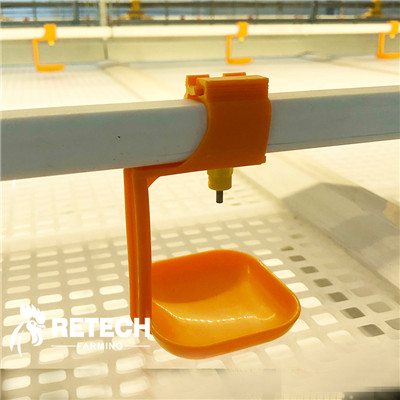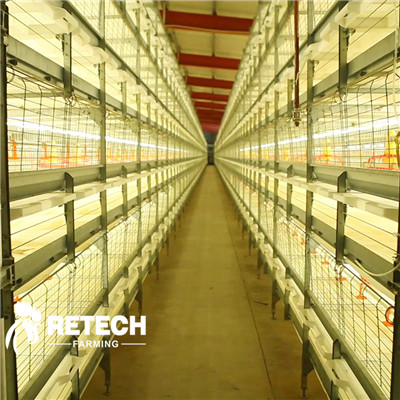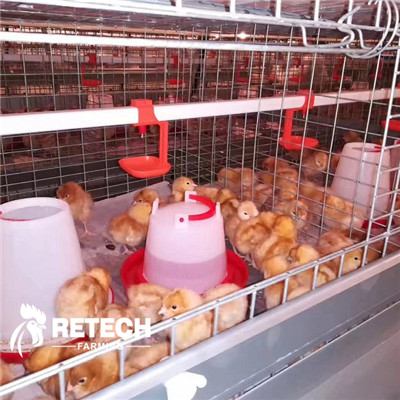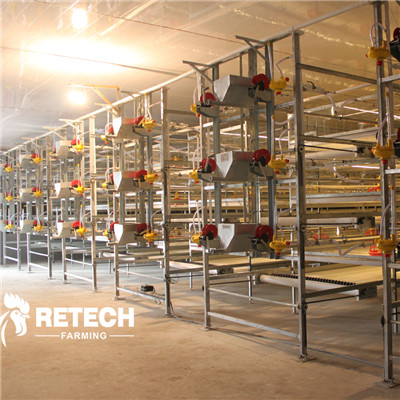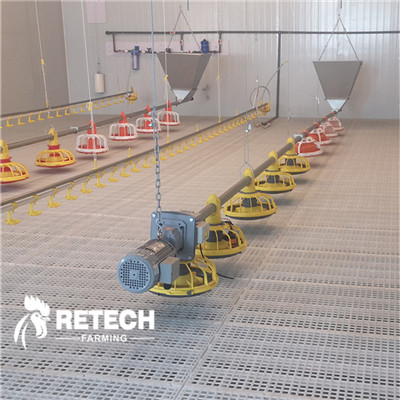I. Juomaveden hallinta
Lääkityksen tai rokotusten aiheuttamaa vedensaannin rajoittamistarvetta lukuun ottamatta on varmistettava normaali 24 tunnin veden saanti. Riittävän juomaveden saannin varmistamiseksikanalattulisi varata erityistä aikaa ja henkilöstöä vesilinjan huoltoa varten. Kanalanhoitajan tulee tarkistaa vesilinja päivittäin tukosten ja nippajuomien vuotojen varalta. Tukkeutuneet vesilinjat aiheuttavat broilereille vedenpuutetta, jolla on erittäin vakavia seurauksia.
Vuotavasta nippajuomarista tuleva vesi ei ainoastaan tuhlaa lääkkeitä, vaan se myös joutuu kerääjäkaivoon laimentamaan lantaa, joka lopulta valuu kaukaloon. Tämä on rehun hukkaa ja voi aiheuttaa suolistosairauksia. Nämä kaksi ongelmaa kohtaavat jokainen kanala, ja niiden varhainen havaitseminen ja huolto ovat erittäin tärkeitä.
Lisäksi ennen juomaveden immunisointia vedenjakelulaite on puhdistettava huolellisesti, jotta juomaveteen ei jää desinfiointiainejäämiä.
2. Hygienian ja desinfioinnin hallinta
Huolehdi ympäristön terveydestä ja desinfioinnista kanalan sisällä ja ulkopuolella, estä taudinaiheuttajien leviäminen. Kaikilla työntekijöillä on ehdottomasti kiellettyä poistua pellolta ilman erityisiä syitä. Palaa pellolle vaihtamalla desinfiointi ennen tuotantoalueelle tuloa. Poista kananlanta ajoissa. Olipa kyseessä sitten manuaalinen tai mekaaninen lannan poisto, lanta on poistettava säännöllisesti, jotta kananlannan viipymäaika kanalassa on mahdollisimman lyhyt.kanala.
Erityisesti haudonta-ajan ensimmäisinä päivinä tilassa ei yleensä ole tuuletusta.kanalaja lanta tulee poistaa ajoissa joka päivä riippuen siitä, kuinka paljon sitä syntyy. Myös lanta tulee poistaa säännöllisesti broilereiden kasvaessa.
Säännöllinen desinfiointi kanan suihkeella on tärkeä keino ehkäistä ja torjua tartuntatautien esiintymistä. Kanojen desinfiointi tulisi tehdä hajuttomilla ja vähemmän ärsyttävillä desinfiointiaineilla, ja useita ainesosia tulisi käyttää vuorotellen.
Yleensä kerran viikossa talvella, kaksi kertaa viikossa keväällä ja syksyllä ja kerran päivässä kesällä. Yksi huomioitava seikka on, että desinfiointivesi tulisi käyttää vasta kanalan esilämmityksen jälkeen. Desinfiointivaikutus on paras, kun huoneenlämpötila on noin 25℃Desinfioinnin tarkoituksena on pääasiassa tappaa ilmassa olevia bakteereja ja viruksia, joten mitä hienompia ruiskutetut pisarat ovat, sitä parempi. Älä ymmärrä, että kanojen ruiskuttaminen on desinfiointia.
3. Lämpötilan hallinta
Lämpötilan hallinnan korkein taso on "jatkuva ja sujuva siirtyminen". Äkillinen kylmyys ja kuumuus ovat kanankasvatuksen suuri tabu. Oikea lämpötila on tae kanojen nopeasta kasvusta, ja yleensä suhteellisen korkea lämpötila tekee kasvusta nopeampaa.
Poikasten fysiologisten ominaisuuksien mukaan haudontalämpötilan tulisi olla 33–35 astetta ensimmäisten kolmen päivän aikana.℃, 4 ~ 7 päivää päivässä pudottaa 1℃, 29.–31.℃viikon lopussa, viikoittaisen 2–3 pudotuksen jälkeen℃6 viikon iästä 18–24-vuotiaaksi℃Jäähdytys on tehtävä hitaasti ja poikasen rakenteen, painon ja vuodenaikojen vaihteluiden mukaan. Varmista, ettei talon lämpötilassa tapahdu rajuja muutoksia.
Lämpötilan sopivuuden tarkistamisen lisäksi on lämpömittarin tarkkailun lisäksi (lämpömittari tulee ripustaa haudonta-astiaan samalle korkeudelle kuin poikasten selkä. Älä aseta sitä liian lähelle lämmönlähdettä tai nurkkiin) tärkeämpää mitata poikasten suorituskykyä, dynamiikkaa ja ääntä. Vaikka yleensä voit käyttää lämpömittaria lämpötilan mittaamiseen...kanalalämpömittari joskus pettää, eikä lämpötilan arvioinnissa voida luottaa pelkästään lämpömittariin.
Kasvattajan tulisi hallita kanojen lämpötilan tarkkailu ja oppia arvioimaan lämpötilan sopivuutta.kanalalämpötila ilman lämpömittaria. Jos poikaset ovat jakautuneet tasaisesti ja muutama koko parvesta tai yksittäiset suuremmat kanat näyttävät avaavan suunsa, se tarkoittaa, että lämpötila on normaali. Jos poikaset näyttävät avaavan suunsa ja siipensä, siirry pois lämmönlähteestä ja tunge sivuun, se tarkoittaa, että lämpötila on laskenut.
Kun ne näyttävät kasaantuvan, kallistuvan kohti lämmönlähdettä, tungeksivat yhteen tai kasaantuvat itään tai länteen, se tarkoittaa, että lämpötila on liian alhainen. Kesäkanoilla on erittäin tärkeää ehkäistä lämpöhalvausta, erityisesti 30 päivän parvien jälkeen, kun ympäristön lämpötila ylittää 33℃kun vesisuihkujäähdytyslaitteiden on oltava käytettävissä. Huomaa myös, että yöllä poikaset nukkuvat ja lepäävät liikkumatta, joten vaaditun lämpötilan tulisi olla 1–2 astetta.℃korkeampi.
Julkaisun aika: 1. syyskuuta 2022


